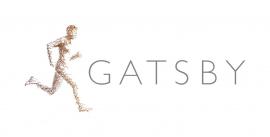Digestion
This resource list provides ideas for teaching about the structure and function of the digestive tract. From 2014, students should learn about:
• the tissues and organs of the human digestive system, including adaptations to function and how the digestive system digests food (enzymes simply as biological catalysts)
• the importance of bacteria in the human digestive system
Visit the secondary science webpage to access all lists: www.stem.org.uk/secondary-science
Whilst this list provides a source of information and ideas for experimental work, it is important to note that recommendations can date very quickly. Do NOT follow suggestions which conflict with current advice from CLEAPSS, SSERC or recent safety guides. eLibrary users are responsible for ensuring that any activity, including practical work, which they carry out is consistent with current regulations related to Health and Safety and that they carry an appropriate risk assessment. Further information is provided in our Health and Safety guidance.
- ALL
- Teacher guidance
- Video
- External link
Teacher guidance
RADAAR framework to support digestion
This infographic uses the RADAAR (research, anticipate, diagnose, address, assess, review) framework developed by the Best Evidence Science Teaching (BEST) project, to guide teachers through teaching the topic of digestion to 11 to 14 year olds. It looks at possible student misconceptions and how these can be overcome, along with the use and validity of models.
Video
Demonstrating Biology: It Takes Guts
Time to make friends at the local abattoir! This film tells you all you need to know to demonstrate the digestive system.
Nigel Collins has clearly developed his presentation over time, having performed this demo for several years, and has collected some fascinating endoscopy films to supplement the explanations.
Visking Tubing
This resource describes a visual way of demonstrating diffusion through a selectively-permeable membrane. It can be used as a model for the human gut or for investigating the effect of amylase on starch. Two standard tests are used: iodine to test for starch and Benedict’s reagent to test for the presence of reducing sugars, such as glucose.
External link
ABPI - digestion *suitable for home teaching*
This resource is a series of interactive webpages that describe the processes of digestion. The resource could be used as a revision aid for students.




